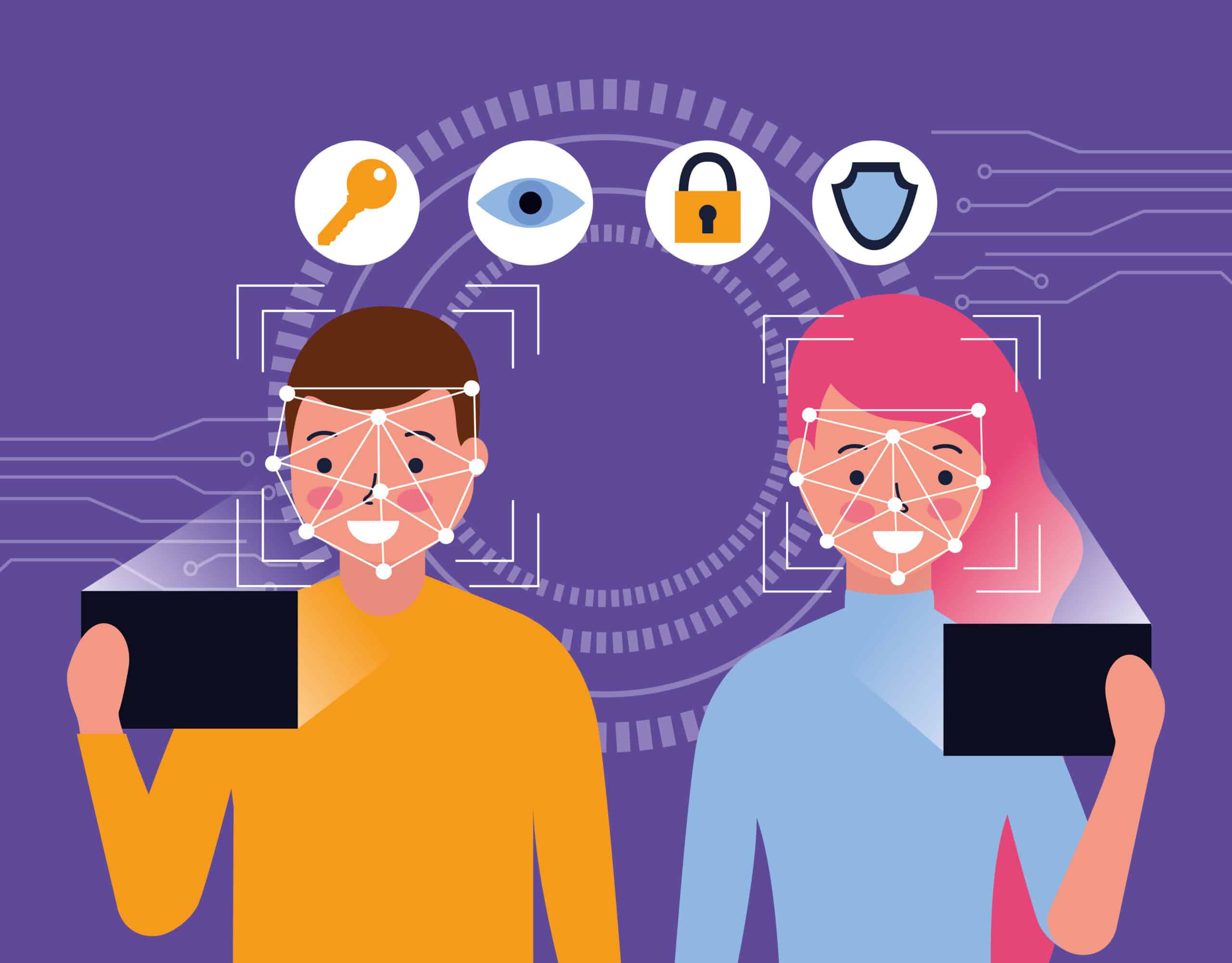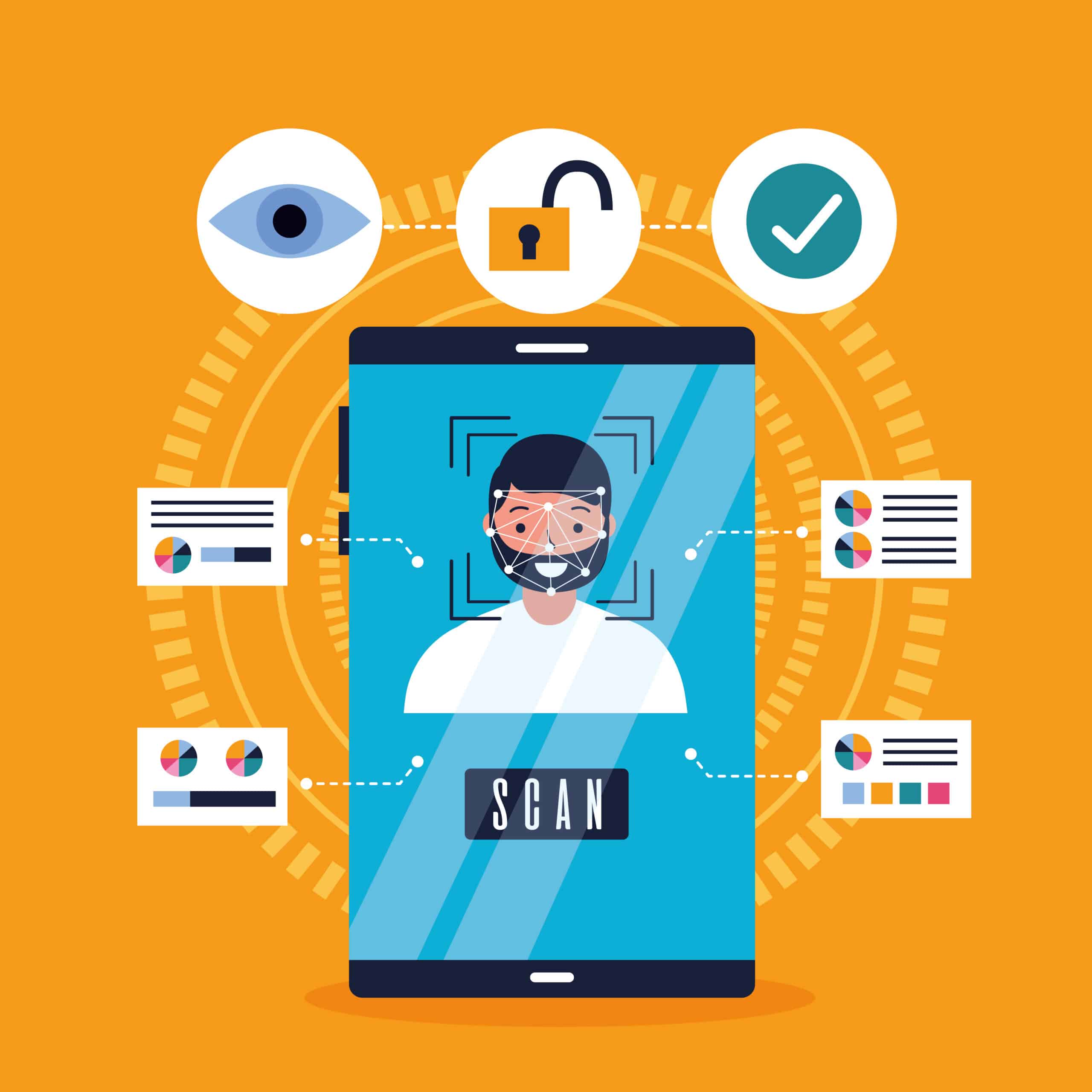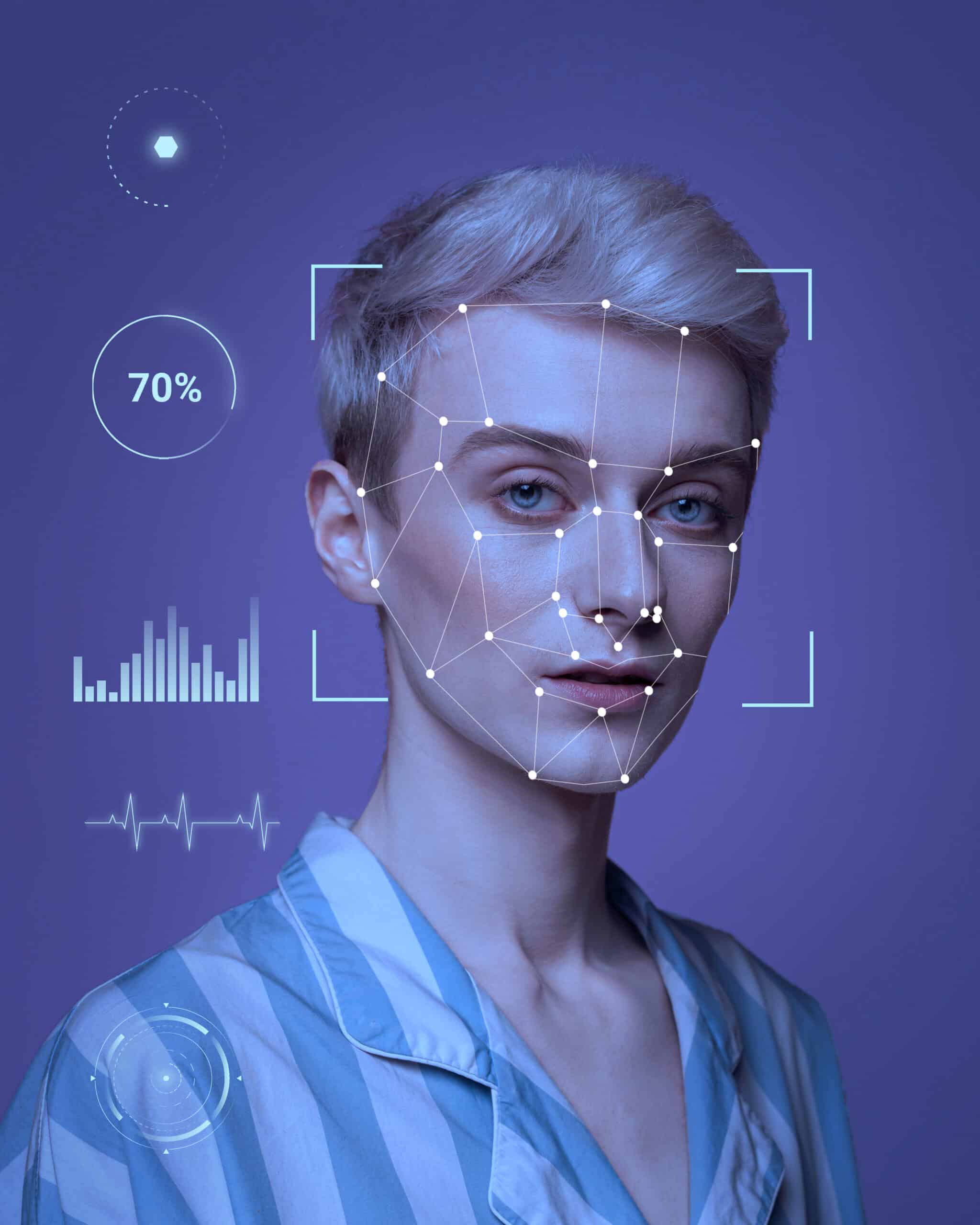Uncovering Facial Recognition: Unlocking the Power of Identity Verification
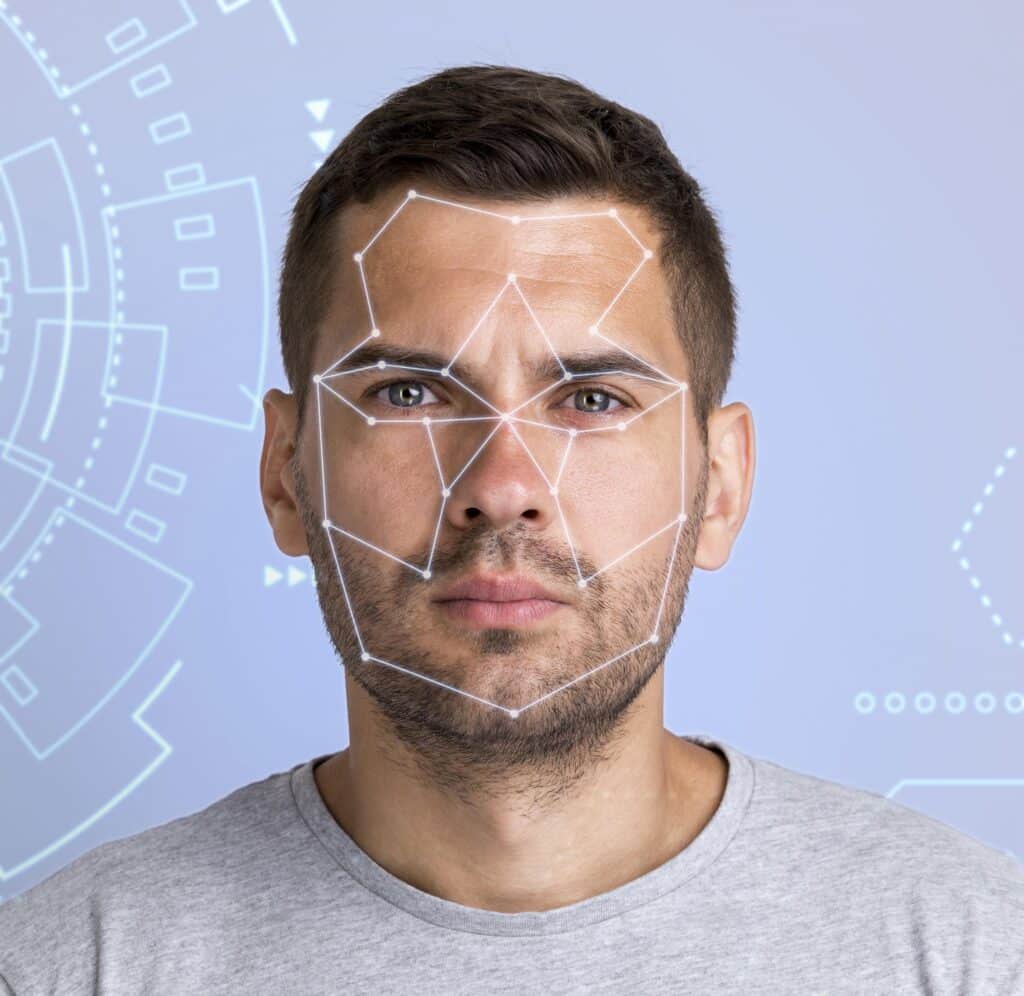
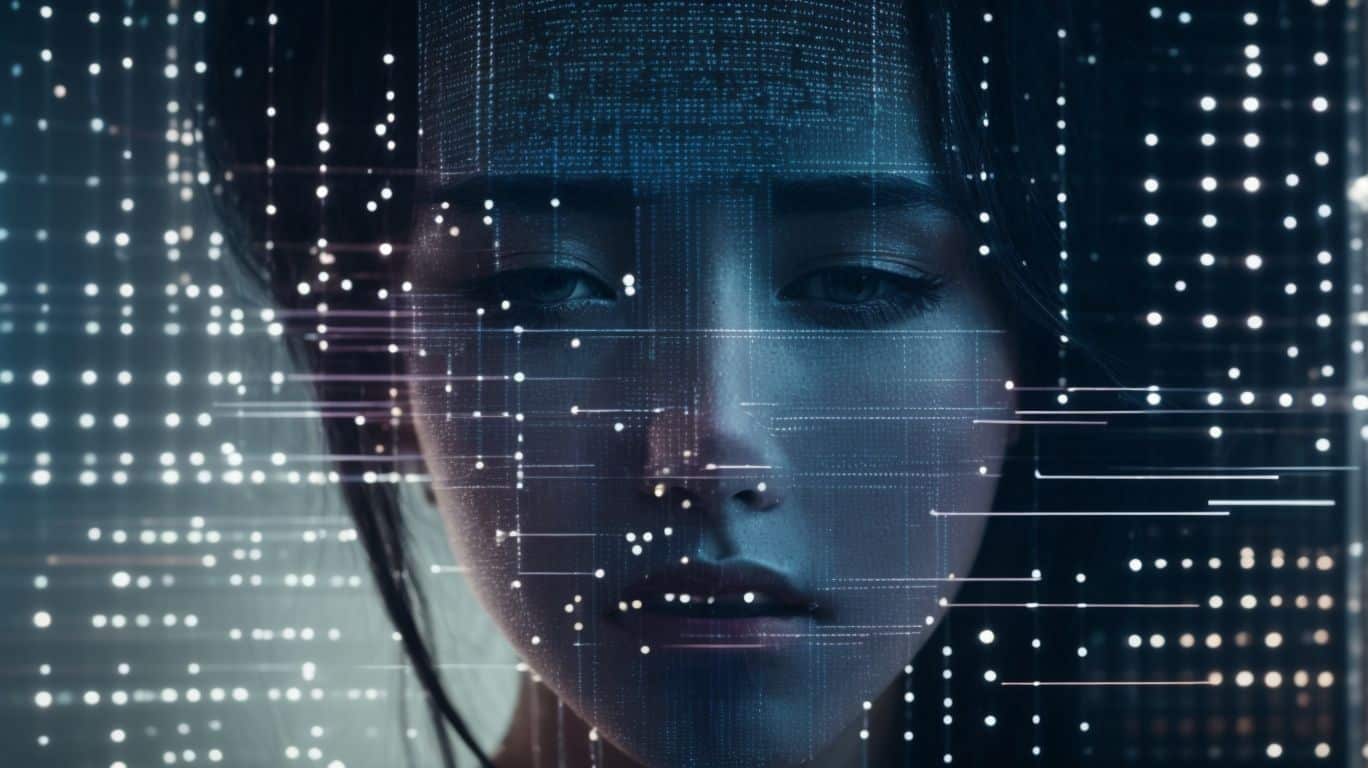
Facial recognition technology has become increasingly prevalent in our daily lives, from unlocking our smartphones to enhancing security measures at airports and banks. Explore facial ID verification potential.
We will explore the process step by step, from facial detection to matching, and discuss the numerous benefits of this technology, such as improved security and efficiency.
Explore the potential applications across various industries, while also addressing concerns surrounding privacy and bias, and discover how to effectively address these concerns for a more ethical use of facial recognition technology.
What Is Facial Recognition Identity Verification?
Facial Recognition Identity Verification is a process that utilizes biometric technology to authenticate and validate an individual’s identity by analyzing their facial features.
This technology captures and stores unique facial characteristics such as the distance between the eyes, nose, and mouth, then converts them into biometric data points. These data points serve as a reference for future comparisons during the authentication process.
Facial recognition identity verification offers a seamless and secure way to confirm a person’s identity, eliminating the need for traditional methods like passwords or PINs. Advanced algorithms and artificial intelligence play a crucial role in accurately matching the biometric data with stored templates, ensuring a high level of security and precision in identity verification.
How Does Facial Recognition Identity Verification Work?
Facial Recognition Identity Verification operates through a series of steps including facial detection, landmark detection, feature extraction, and facial matching using advanced biometric technology.
Once the system detects a face, it proceeds to identify key facial landmarks like the eyes, nose, and mouth, which serve as unique identifiers for each individual. Subsequently, it applies feature extraction techniques to convert these landmarks into numerical data, capturing distinctive facial characteristics. Machine learning algorithms then come into play to analyze and create a facial template from the extracted features. This template is compared against a database of pre-registered facial templates for accurate identity verification, thus enabling secure access control to systems and facilities.
Facial Detection
Facial Detection is the initial stage in facial recognition identity verification where the system identifies and locates the presence of a human face within an image or video.
It involves complex algorithms that scan the image or video for patterns and structures that match known facial features. These systems analyze key facial biometrics such as the distance between the eyes, the shape of the nose, and the contours of the face to create a unique facial profile. Advanced image processing techniques enhance facial detection to accurately detect faces in varying lighting conditions or orientations. This process forms the foundation for subsequent stages of facial recognition, such as feature extraction and comparison.
Facial Landmark Detection
Facial Landmark Detection involves identifying key points on a face, such as eyes, nose, and mouth, to create a unique facial map used for comparison and authentication.
Advanced algorithms determine these key points by analyzing the contours and features of the face, allowing for precise identification. Once the system establishes these landmarks, they form a geometric pattern that serves as a reference for facial analysis and biometric authentication. Landmark detection plays a crucial role in various applications, including facial recognition systems, virtual makeup applications, and emotion detection technology.
By accurately pinpointing these crucial facial points, the system can differentiate individuals based on their distinct facial features and enhance security measures across different domains.
Facial Feature Extraction
Facial Feature Extraction involves capturing and analyzing specific facial characteristics like distances between key features or unique patterns to create a digital representation for comparison.
This process is integral to facial biometrics and authentication systems, as it enables the extraction of distinguishing features that are unique to each individual. By utilizing advanced algorithms, facial feature extraction can accurately identify and map intricate details such as the curvature of lips, the shape of the nose, or the spacing between the eyes.
The system converts these extracted features into numerical data points, forming a facial template that serves as a basis for comparison during the verification process. The precision and reliability of this method make it a valuable tool in various security applications where identity authentication is crucial.
Facial Matching
Facial Matching compares the extracted facial features from a presented image or video with stored templates to determine identity, ensuring high verification accuracy.
This process involves analyzing various characteristics such as the distance between eyes, nose shape, and facial contours to create a unique digital signature. By comparing these features to the templates in a database, facial recognition technology can accurately verify an individual’s identity. The algorithm measures specific points on the face to establish patterns and similarities, allowing for precise identification. This sophisticated approach significantly enhances security measures in sectors ranging from law enforcement to financial services. Facial matching plays a pivotal role in streamlining authentication processes and safeguarding sensitive information.
What Are The Benefits Of Facial Recognition Identity Verification?
Facial Recognition Identity Verification offers numerous benefits including enhanced security, precise user identification, and advanced accuracy in authentication processes.
By utilizing cutting-edge technology, facial recognition scans unique facial features to create a digital signature, ensuring a secure and reliable verification process. This method significantly reduces the risk of identity theft and fraud, providing users with a seamless and convenient authentication experience. The advanced algorithms used in facial recognition systems further enhance security measures by accurately identifying individuals in various environments and lighting conditions, making it a robust solution for modern security needs.
Enhanced Security
Enhanced Security is a key benefit of Facial Recognition Identity Verification, providing robust access control measures, fraud prevention capabilities, and a secure authentication environment.
By utilizing advanced facial recognition technology, organizations can significantly improve their security protocols and streamline authentication processes. Facial recognition enhances access control by granting or denying entry based on verified facial features, reducing the risk of unauthorized access. This innovative technology also proves invaluable in fraud prevention efforts, detecting suspicious activities and unauthorized attempts with a high level of accuracy. The secure authentication provided by facial recognition ensures that only authorized individuals can access sensitive information, enhancing overall security measures in various sectors, from banking to healthcare.
Increased Efficiency
Increased Efficiency is another benefit of Facial Recognition Identity Verification, streamlining authentication processes, improving identity management, and offering user-friendly verification tools.
Through the integration of facial recognition technology into authentication procedures, organizations can significantly enhance operational efficiency. By simplifying the process of verifying and confirming identities, this innovative tool enables seamless access to systems and information, reducing the time and effort required for manual authentication methods.
The user-friendly nature of facial recognition systems promotes ease of use and ensures a smooth verification experience for individuals accessing various platforms. This advancement in identity management not only boosts security measures but also fosters a more efficient workflow within organizations.
Improved User Experience
Improved User Experience is a significant benefit of Facial Recognition Identity Verification, offering seamless user authentication, heightened digital security, and enhanced identity protection.
Facial recognition technology has revolutionized the way users interact with various digital platforms. By incorporating facial recognition into authentication processes, users can access their devices or accounts with a simple glance, eliminating the need for cumbersome passwords and PINs.
This seamless authentication not only enhances convenience for users but also provides a higher level of security by ensuring that only authorized individuals can access sensitive information. The use of facial recognition technology helps in protecting user identities from potential data breaches and cyber threats, thereby safeguarding personal information in today’s digital age.
What Are The Potential Applications Of Facial Recognition Identity Verification?
Facial Recognition Identity Verification has diverse applications in sectors such as airport security, banking and finance, law enforcement, healthcare, retail, and hospitality.
- In airport security, facial recognition technology plays a crucial role in enhancing safety measures by accurately verifying the identity of passengers and employees. Security personnel utilize this technology to monitor and track individuals at checkpoints, boarding gates, and throughout terminals, helping to flag any security threats in real-time.
- In financial services, facial recognition aids in secure and efficient identity authentication for banking transactions, online payments, and access to sensitive financial information, enhancing customer convenience while minimizing the risk of fraud or unauthorized access.
Airport Security
Airport Security is a crucial application of Facial Recognition Identity Verification, providing biometric security measures for secure access control and identity validation.
This advanced technology is widely incorporated at airports worldwide to enhance the efficiency and accuracy of security protocols. Facial recognition systems scan passengers’ faces in real-time, comparing facial features to a database of known individuals, enabling swift identification of potential threats. By verifying passengers’ identities through biometric data, such as facial patterns, airports can ensure a higher level of security and significantly reduce the risks associated with unauthorized access or fraudulent identities. This innovative approach not only streamlines the security process but also reinforces the overall safety and protection of airport environments.
Banking and Finance
The banking and finance industry leverages Facial Recognition Identity Verification for fraud prevention, secure identity verification, and advanced authentication technology.
By integrating facial recognition technology, financial institutions can offer an extra layer of security to protect customer accounts and transactions from fraudulent activities. Facial recognition systems analyze unique facial features to confirm the identity of individuals accessing their accounts, thus significantly reducing the risk of unauthorized access.
This advanced authentication method not only enhances security but also streamlines the verification process, providing a seamless user experience. Facial recognition technology enables banks to comply with regulatory requirements for identity verification, ensuring a more robust framework for combating financial crimes.
Law Enforcement
Law Enforcement agencies use Facial Recognition Identity Verification to enhance identification technology, analyze facial data, and expedite investigative processes.
By utilizing facial recognition technology, law enforcement departments are able to compare a suspect’s facial features with vast databases of stored images to accurately identify individuals even in crowded or low-quality surveillance footage. This advanced technology has proven to be a valuable tool in solving crimes quickly and efficiently. The analysis of facial data allows investigators to track suspects, gather evidence, and reconstruct events with higher accuracy, ultimately leading to more streamlined investigations and improved public safety.
Healthcare
In healthcare, Facial Recognition Identity Verification aids in secure identity verification, medical record access, and facial scans for patient identification and data protection.
This technology enhances the security and accuracy of confirming patients’ identities, reducing the risks of unauthorized access to sensitive medical records. By using facial recognition systems, healthcare facilities can streamline the authentication process, making it more efficient and less prone to errors.
Facial scans can be utilized to track patient interactions and ensure that the correct individuals are receiving the necessary care. The integration of facial recognition in healthcare settings offers a robust solution for safeguarding patient data and maintaining confidentiality.
Retail and Hospitality
Retail and Hospitality sectors employ Facial Recognition Identity Verification for digital security measures, enhanced user privacy standards, and personalized customer experiences.
By using facial recognition technology, businesses in these sectors can enhance the overall security of their digital systems by implementing multi-factor authentication methods. This not only ensures that sensitive customer data remains protected but also helps in preventing unauthorized access to secure areas within retail and hospitality establishments.
The use of facial recognition enables businesses to offer a more personalized experience to their customers by tailoring recommendations and promotional offers based on individual preferences and past purchase behaviors, thus enhancing customer satisfaction and loyalty.
What Are The Concerns Surrounding Facial Recognition Identity Verification?
Concerns related to Facial Recognition Identity Verification include potential privacy infringements, data protection vulnerabilities, misuse of facial biometrics, and challenges in fraud prevention.
Privacy advocates often argue that the widespread adoption of facial recognition technology poses a significant threat to individuals’ privacy rights. The collection and storage of sensitive biometric data raise questions about how securely this information is handled and the potential for unauthorized access. The misuse of facial biometrics for surveillance purposes underscores the need for stringent regulations to safeguard against potential abuses. Despite its touted benefits in fraud prevention, the technology’s limitations in accurately distinguishing between identical twins or individuals with similar features remain a prevailing concern.
Invasion of Privacy
The invasion of privacy is a significant concern linked to facial recognition identity verification, raising questions about user privacy, data security, and identity protection.
When it comes to facial recognition technology, the boundary between convenience and invasion of privacy can often blur. Users worry about the implications of their facial data being stored and potentially misused by third parties without their consent. The issue extends beyond mere privacy intrusion to concerns about data security and the safeguarding of personal information. As identities are at risk of being compromised or misused in various scenarios, the need for robust measures to ensure user privacy and identity protection has become more pressing than ever.
Bias and Discrimination
Bias and Discrimination pose challenges in Facial Recognition Identity Verification, affecting identity authentication processes and raising ethical concerns about algorithmic fairness.
Critics have criticized facial recognition technology for its potential to reinforce existing biases, leading to discriminatory outcomes in identification systems. This bias stems from the data used to train the algorithms, often reflecting societal prejudices. As a result, certain groups may disproportionately face misidentification or greater scrutiny during authentication processes.
Ensuring algorithmic fairness is crucial to mitigating these issues and promoting equal treatment for all individuals in identity verification processes. Ethical considerations, such as transparency and accountability in algorithm development, play a vital role in addressing bias and discrimination within facial recognition technology.
Security Breaches
Security Breaches represent potential risks in Facial Recognition Identity Verification, involving data protection vulnerabilities, fraud opportunities, and the misuse of biometric information.
Such breaches can expose sensitive personal details to unauthorized parties, leading to identity theft and financial losses. The improper handling of biometric data may result in irreversible consequences for individuals, as biometric information, such as fingerprints or facial features, is unique and cannot be changed like passwords.
Heightened security measures must be in place to safeguard this information against cybercriminals who may exploit it for malicious purposes, emphasizing the urgency for robust data protection protocols and fraud prevention strategies within facial recognition systems.
How Can These Concerns Be Addressed?
Addressing concerns surrounding Facial Recognition Identity Verification requires transparency, consent mechanisms, regular audits, diverse training data, and robust fraud prevention strategies.
One way to enhance transparency in facial recognition technology is by ensuring that individuals are fully informed about when and how their data is being used. Implementing clear consent mechanisms that allow users to provide explicit permission before their facial data is processed can help build trust.
Conducting regular audits of the facial recognition system can ensure compliance with privacy regulations and help identify any potential biases or errors in the algorithm. Utilizing diverse training data that represents various demographics can also improve the accuracy and fairness of facial recognition technology.”
Transparency and Consent
Transparency and Consent are crucial in addressing concerns about Facial Recognition Identity Verification, ensuring user privacy, data protection, and identity safeguarding through informed consent processes.
When individuals are aware of how their facial data is being collected, stored, and utilized, they can make more informed decisions about sharing such sensitive information. By obtaining explicit consent from users before deploying facial recognition technology, organizations can build trust and respect user privacy. Clear communication regarding the purposes of facial recognition systems and how data will be used helps in fostering a transparent and accountable environment. This transparency allows users to understand the risks involved, empowering them to take control of their identity protection.
Regular Audits and Testing
Regular Audits and Testing play a critical role in addressing concerns surrounding Facial Recognition Identity Verification, ensuring data protection, fraud prevention, and accurate identity validation.
These audits and tests not only help in identifying potential vulnerabilities within facial recognition systems but also aid in enhancing the security measures to safeguard sensitive data from unauthorized access. By regularly analyzing and assessing the performance of facial recognition technology through audits, organizations can maintain compliance with data protection regulations and strengthen their fraud prevention mechanisms. Consistent testing allows for the validation of individuals’ identities more accurately, minimizing the risks of fraudulent activities and ensuring reliable authentication processes.
Diversity in Training Data
Diversity in Training Data is essential to address concerns of bias and discrimination in Facial Recognition Identity Verification, enhancing facial verification accuracy and reducing algorithmic biases.
Ensuring a variety of faces from different ethnicities, ages, genders, and backgrounds in the training dataset helps the facial recognition algorithm learn to accurately identify individuals from all groups. This inclusivity minimizes the risk of the algorithm disproportionately misidentifying or excluding specific demographics. Training the algorithm on diverse data sets reduces the likelihood of reinforcing biases, leading to a more fair and reliable facial verification process that prioritizes accuracy and inclusivity.
Frequently Asked Questions
What is facial recognition identity verification and how does it work?
Facial recognition identity verification is a technology that uses facial recognition algorithms to verify a person’s identity. It works by capturing an individual’s facial features and comparing it with a pre-existing database to confirm their identity.
How accurate is facial recognition identity verification?
Facial recognition identity verification has an accuracy rate of over 99%, making it one of the most reliable forms of identity verification. It uses advanced algorithms and machine learning to continuously improve its accuracy.
Can facial recognition identity verification be fooled by using a photograph?
No, facial recognition identity verification incorporates advanced anti-spoofing measures to prevent it from being fooled by a photograph. It uses liveness detection technology to ensure that the person being verified is physically present and not just a picture.
What are the potential benefits of using facial recognition identity verification?
Facial recognition identity verification has various benefits, including increased security, improved efficiency, and enhanced customer experience. It can help prevent identity fraud, reduce manual processes, and provide a seamless and convenient verification experience.
Is facial recognition identity verification safe and secure?
Yes, facial recognition identity verification is safe and secure. It uses biometric data that is unique to each individual and cannot be replicated or stolen. Additionally, most facial recognition systems have strict security protocols in place to protect the data they collect.
What industries can benefit from using facial recognition identity verification?
Facial recognition identity verification can benefit a wide range of industries, including banking and finance, healthcare, retail, travel, and government agencies. Also, any organization that requires strong identity verification measures can benefit from implementing facial recognition technology.

